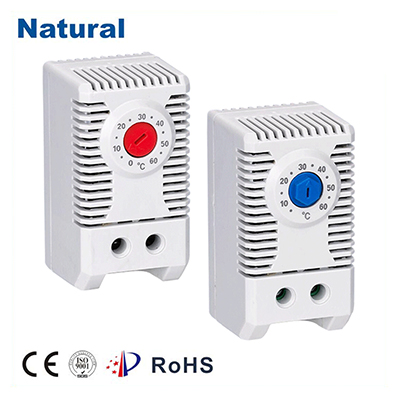Introduction

In the realm of temperature regulation, bimetal thermostats stand as an exceptional innovation, combining simplicity, reliability, and accuracy. These devices play a pivotal role in a wide array of applications, from household appliances to industrial processes, ensuring that the desired temperature is maintained with remarkable precision. This article delves into the mechanics, applications, and advantages of bimetal thermostats, highlighting their significance in modern engineering. The Mechanics Behind Bimetal Thermostats At the heart of every bimetal thermostat lies a fundamental principle – the behavior of bimetallic strips. These strips are composed of two distinct metals with differing coefficients of thermal expansion, typically steel and copper. When exposed to varying temperatures, the metals expand and contract at different rates, causing the strip to bend. This bending motion is harnessed by the bimetal thermostat to open or close an electrical circuit, thereby controlling the heating or cooling process. Applications in Diverse Industries Bimetal thermostats find their utility across a multitude of industries. In household appliances, such as ovens, refrigerators, and water heaters, they ensure that temperatures remain within safe and optimal ranges. These thermostats also play a critical role in industrial equipment, safeguarding machinery from overheating and enabling efficient temperature-sensitive processes. Automotive engines rely on bimetal thermostats to regulate coolant flow, preventing engine damage due to excessive heat. Advantages of Bimetal Thermostats Reliability:One of the key advantages of bimetal thermostats is their robustness. The absence of delicate electronic components makes them less prone to failure, ensuring longevity and dependable operation. Cost-effectiveness:Bimetal thermostats are cost-effective both in terms of initial investment and maintenance. Their simple design and manufacturing process contribute to their affordability, making them a preferred choice in various applications. Accuracy:The inherent sensitivity of bimetal strips to temperature changes results in precise control over temperature regulation. This accuracy is crucial in applications where even slight deviations can lead to significant consequences. Safety:Bimetal thermostats provide an extra layer of safety by preventing overheating, which can be especially critical in scenarios involving flammable materials or sensitive components. Versatility:These thermostats are adaptable to a wide range of temperature requirements, from low to high. Their versatility further extends to different environmental conditions and operating environments. Innovations and Future Trends While bimetal thermostats have stood the test of time, ongoing technological advancements are enhancing their capabilities. Integration with digital controls, connectivity features, and the incorporation of feedback mechanisms are some of the developments aimed at elevating their performance and functionality. As industries continue to evolve, bimetal thermostats are poised to evolve alongside, maintaining their relevance in a rapidly changing landscape. Conclusion In the realm of temperature management, bimetal thermostats have firmly established themselves as a cornerstone of precision and efficiency. Their ingenious design, coupled with inherent advantages, has rendered them indispensable in an array of applications. As technology marches forward, bimetal thermostats will undoubtedly continue to play a pivotal role in shaping the way we control and regulate temperature, ensuring a safer, more efficient, and comfortable world.